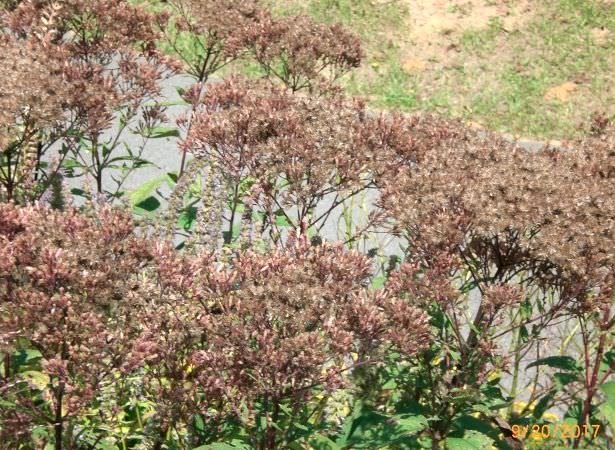
This is not a weed. It is a plant with flowers that grow 4-8 feet. The color of the flowers is mauve, each head of flowers has 5-7 florets, and they have a wonderful vanilla scent. Butterflies are attracted to the large supply of nectar that these flowers produce. Two of the largest butterflies here in the U.S. and Canada are the Monarchs and Swallowtails, and they are especially fond of Joe Pye Weed.
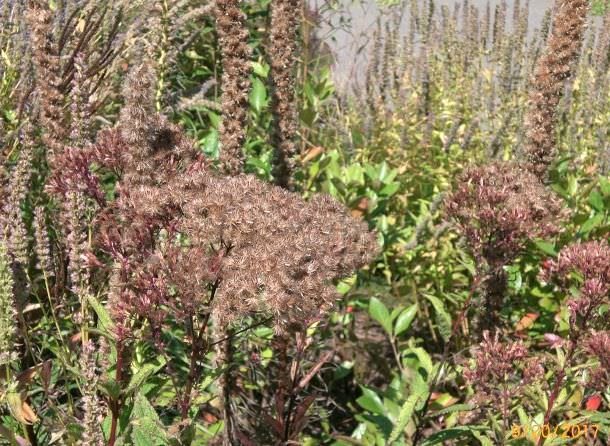
The flowers bloom from July to September and are native to mid-western and eastern United States, and southern Canada. There is a folklore that the Joe Pye Weed was named after a Native American Indian named, "Dr. Joe Pye" who used this plant to cure Typhus; a severe bacterial disease that causes high fever, a dark red rash, and an intense headache.

It is also said that tea made from this plant was used for fever, urinary tract infections, and rheumatism when used as an alternative medicine. The hollow stems have been used as straws. Also, the leaves when dried and burned is said to repel flies.
In the United States and Canada, there are approximately 300 different varieties of Jumping Spiders. The adults are hairy and the usual color is black, but are also brownish or gray with lighter colored markings on their abdomens. Their vision is excellent and they can jump as far as 20 times their body length.

Jumping Spiders can move sideways and backwards very fast. When they hunt for prey outside, you can find them around rocks or leaves, on tree bark and branches or bushes and fences. Indoors, you will find them looking for prey near doors and windows, just like this one.
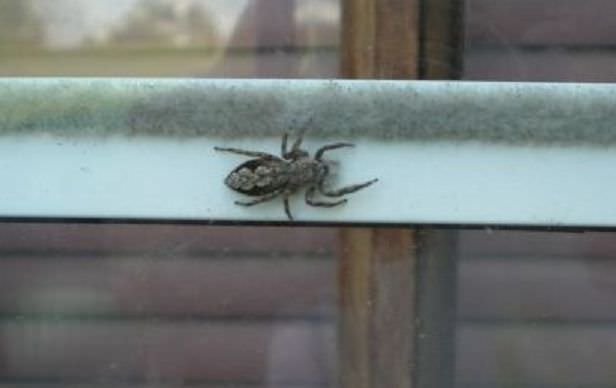
Their usual distance for catching prey is only a couple of inches but if the feel threatened, they can jump much further. They jump on their prey by pursuing it, or they will jump on their prey if they just wait for it to pass by them.
There are many different Duskywing Butterflies and they are so hard to identify because they all look similar. I should know because it took me forever to identify this one as the Juvenal's Duskywing, which is commonly found in eastern and southern states.

Males stay low to the ground, perched on plants as they look for females. They drink nectar from dandelions, just like this one was doing when I found it.
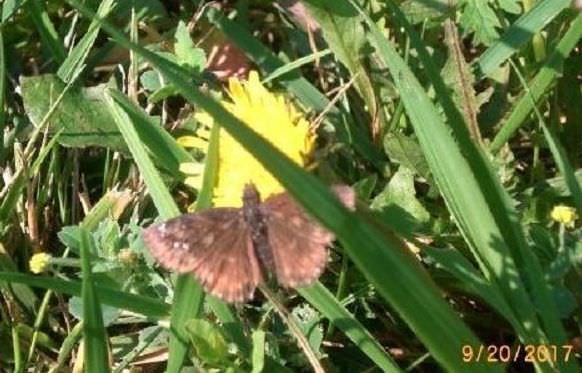
Juvenal's Duskwings also drink nectar from Blueberry, Plum, Wisteria, Lilac, and Carolina Vetch blossoms. Their caterpillars feed on Oak tree leaves.
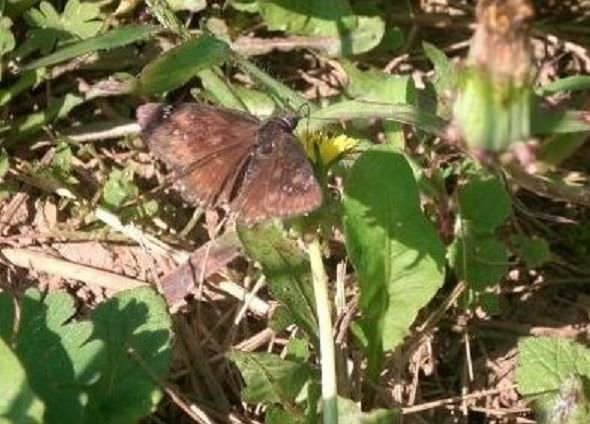
Information Source: glorious-butterfly.com, pest-control.com, insectidentification.org
Image Source: 100% own work using a Casio Exilim Digital Camera.
Very interesting about the Joe Pye Weed. I love herbs/weeds! The jumping spider is a cute little fella---from a distance that is. One actually jumped on me once as I was looking at him, causing me to jump as well--lol
I have gotten so much better with insects but not the spiders. OMG...if one jumped on me, I would have gone crazy! Wait until you see the other spider photos that I have...you won't be using the word "cute" for them! LOL!
Gotta get me some JP Weed .. where is mauve in the rainbow?
You betcha buddy...get some of that there weed! Mauve would be a trouble maker if it was in the rainbow.
There's an interesting history behind the color mauve and a book was even written about it. Here's an excerpt from Mauve: How One Man Invented a Color That Changed the World by Simon Garfield ;
In 1856, while trying to synthesize artificial quinine, 18-year-old chemistry student William Perkin instead produced a murky residue. Fifty years later, he described the event: he "was about to throw a certain residue away when I thought it might be interesting. The solution of it resulted in a strangely beautiful color." Perkin had stumbled across the world's first aniline dye, a color that became known as mauve.
"So what?" you might say. "A teenager invented a new color." As Simon Garfield admirably points out in Mauve, the color really did change the world. Before Perkin's discovery all the dyes and paints were colored by roots, leaves, insects, or, in the case of purple, mollusks. As a result, colors were inconsistent and unpredictably strong, often fading or washing out. Perkin found a dye that would always produce a uniform shade--and he pointed the way to other synthetic colors, thus revolutionizing the world of both dyemaking and fashion. Mauve became all the rage. Queen Victoria wore it to her daughter's wedding in 1858, and the highly influential Empress Eugénie decided the color matched her eyes. Soon, the streets of London erupted in what one wag called the "mauve measles."
Mauve had a much wider impact as well. By finding a commercial use for his discovery--much to the dismay of his teacher, the great August Hofmann, who believed there needed to be a separation between "pure" and "applied" science--Perkin inspired others to follow in his footsteps: "Ten years after Perkin's discovery of mauve, organic chemistry was perceived as being exciting, profitable, and of great practical use." The influx of bright young men all hoping to earn their fortunes through industrial applications of chemistry later brought significant advances in the fields of medicine, perfume, photography, and even explosives. Through it all, Garfield tells his story in clever, witty prose, turning this odd little tale into a very entertaining read.'
Wow! Thanks so much for all of the interesting information about the color mauve. And it all began with one man. I love the words used for the mauve rave, "mauve measles" andI really enjoyed this info. Thanks again! : )
Not familiar with that plant, good to learn new. :)
Thanks! I love to learn about new things, especially about different cultures. : )
Some nice shots!
Thanks so much! That is a huge compliment coming from you and I sure do appreciate it! : )
Between two pieces of glass is the perfect way to take spider pictures! Great info...most of which I never knew!
HaHa! That is the perfect way! I am so much better now with insects. I can get closer to them, study them and really appreciate them. But spiders...I think I will always fear them. I can't believe that I actually took photos of spiders. What until you see some of my other spider photos; I am still cringing just thinking about them.
I am so happy to hear that I am able to teach you some things because you are so knowledgeable about so many different things. : )
I know Joe Pye Weed when I see it, but had no idea about how it got it's name! Love that kind of stuff!
Whew..that spider was trapped between glass..he couldn't jump onto you, even if he'd wanted to!!
Thank goodness or you would have heard me screaming form here to Germany! LOL!